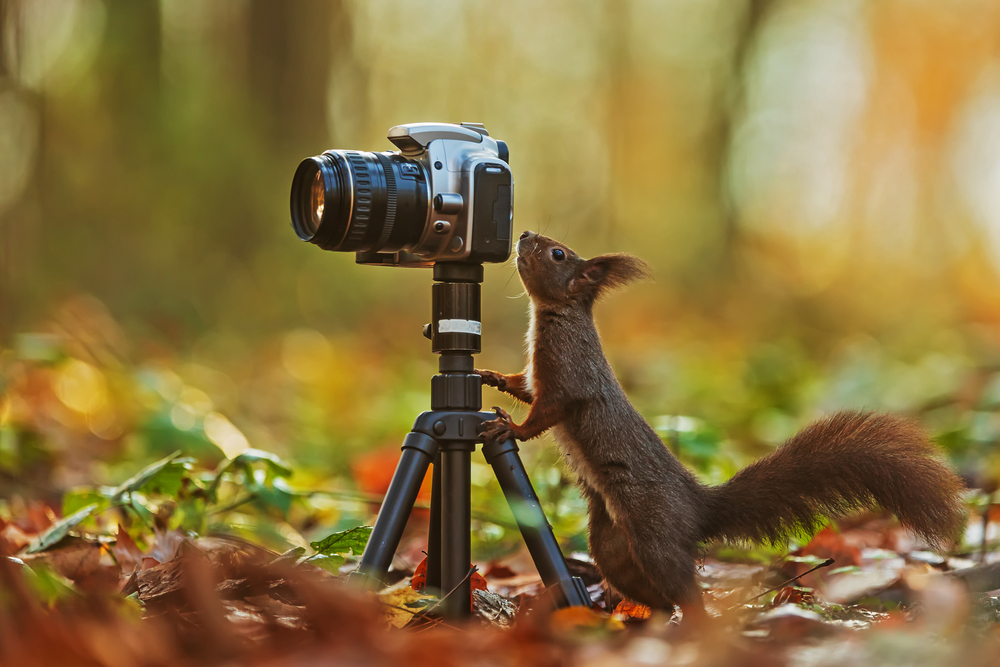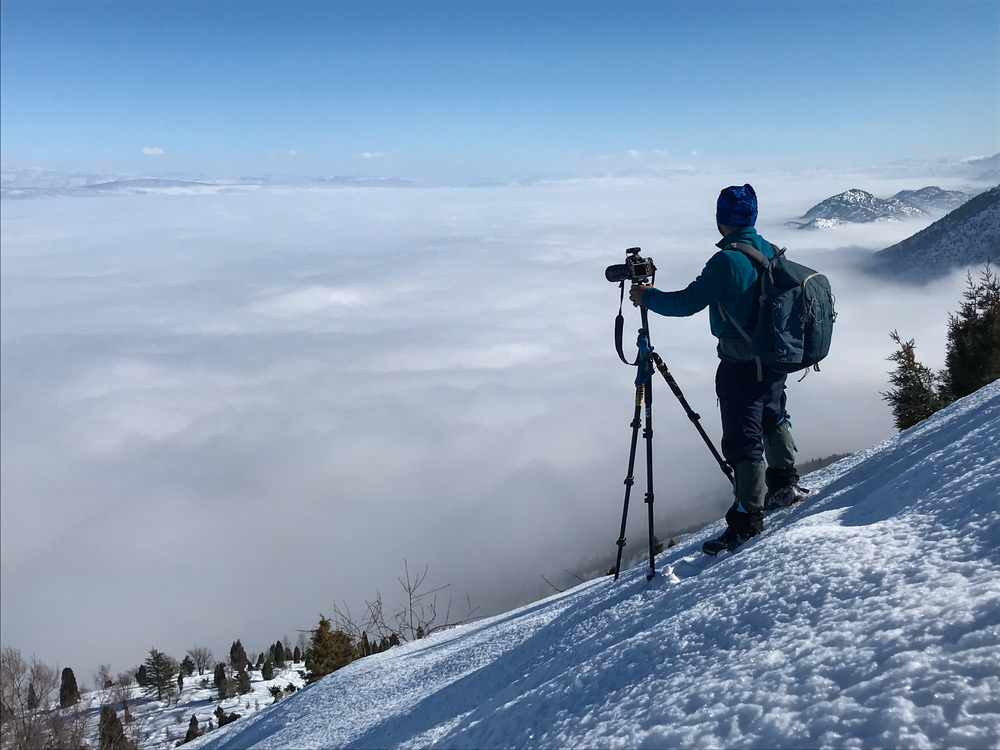You may have heard the word tripod used loosely in many different settings and perhaps wondered exactly what one is.
According to dictionary.com, a tripod is “a three-legged stand or mount for supporting a camera or other apparatus.”
In this article, we will expand on the tripod definition and discuss tripods in the context of photography and for use with optical equipment such as cameras and photography. However, they can also be used with telescopes, monoculars and binoculars.
What Is a Tripod Used For?
The primary function of a tripod is to reduce camera shake, which occurs when a photographer moves the camera system while framing images. This results in blurry videos or images that would otherwise have been impossible without using a camera tripod. Ultimately, using a good tripod reduces blurriness in images significantly under many conditions.
There are two types of shake:
This first type of shake can be reduced by using equipment such as a monopod, tripod, and fluid head, but it can still be an issue for photographers who do not use such equipment or who cannot afford them because it does not happen all the time. It can sometimes be reduced by using a wider aperture, but this does not always solve the problem.
The second type of shake is often caused by mechanical vibration through camera movement when it is being fired while taking the shot. This can be countered by using shutter delay modes or remotely triggering the camera. It can sometimes be reduced by using a fast enough shutter speed to freeze the action, but this cannot always be done because some moving objects are too fast.
If your optical device is secured via its base mount and tripod head, it will counter both types of shake as long as no movement occurs during exposure. In both instances, most tripods reduce shake and allow for better image quality.
There is no limit to what you can use your tripod for, and there are many photography techniques that use tripods successfully. For example, shooting the same scene at different exposures requires a tripod. Also, macro, astrophotography and time-lapse photography require the use of a tripod. The cost and weight of tripods vary greatly, which makes them popular with professionals and amateurs alike.
Why Are Tripods Used In Photography?

In the present day, tripods are widely used in many forms of photography, and a majority of professionals consider them an essential part of their photography equipment.
Tripods are very important in wildlife photography in particular as they allow you to get closer to the shot while minimizing disturbance to animals. Most nature photographers use a tripod because it gives them the ability to capture the perfect shot, with their camera in place, and without fumbling for their device when it’s needed. A mini tripod is also very useful in a wildlife setting due to its lightweight and compact nature which helps when outside.
A tripod is also useful with macro photography or taking long exposures photographs that need comparatively slow shutter speeds because the camera needs to stay absolutely still, not to introduce motion blur into the image.
Additionally, those seeking excellent static shots will often use and appreciate a tripod. For example, those in wedding and landscape photography use tripods because they allow them to adjust and shoot a picture while continually making small adjustments in their still photography while keeping the camera stable.
Many professional sports photographers use tripods (three legs) instead of monopods (one leg). Most tripods offer better stability and a great for capturing the scene. Monopods are great too, as they are more portable, but less stable than their three-legged counterparts.
Benefits Of Using a Tripod For Photography

Using a tripod can be useful in many different scenarios. Here are some of the benefits below:
Reduces Blur
They keep the camera steady so that images are not affected by unwanted blurriness caused by motion or a shaky hand, and they help achieve the best shots by ensuring correct exposure and focus.
Provides stability
Tripods provide stability when shooting pictures in different scenarios. Similarly, video tripods reduce the shakiness from surrounding movements that would normally be visible on playback.
Distributes weight
A tripod can also take the weight of bulky equipment such as a very long lens, flashes and lighting that would be too heavy to hold in one’s hand for any length of time.
Allows for versatility
A tripod can be moved around easily to change one’s composition. For example, photographers do not have to stay behind the camera while they change their vantage point since the tripod is flexible enough to reposition without having to detach it from the tripod head.
Because of the ability to move around and reposition, tripods also allow photographers to produce compositions that are impossible to achieve with handheld cameras.
Allows for discretion
Most importantly, using a tripod enable wildlife photographers to take photographs without disturbing the subject they are photographing. Not all photos can be taken while keeping something in one’s hand or on their lap like a camera; some photos need to be taken while lying on the ground or mounted on a three-legged stand.
Many photographers who specialize in nature photography use a tripod because they allow them to get very close and capture wildlife images in their natural habitats without disturbing them.
Useful for macro photography
A tripod can be used to make macro photographs with a certain zoom lens and long lenses as well. They can also be used to capture photographs of the night sky at slow shutter speeds, particularly if a photographer is using longer or heavy lenses and needs minimal movement for the best frame.
Better accuracy
A tripod allows the user to pinpoint the correct angle and make necessary tiny adjustments to capture the perfect scene.
Summary
Although some tripods may be considered heavy, bulky, cumbersome and expensive by some, they are still held in high regard among most professionals who still find them essential to their job.
In short, many people may struggle to capture a perfect image without a tripod, simply because the camera will not stay steady enough for good photographs if they are simply held in one’s hand.
It is often argued that pros would have to have a lot of equipment or be very wealthy to afford good tripods, but this is untrue. They can be found in all shapes, sizes and price ranges, which means any keen photographer should consider them.
Additional Resources
Sources and References
- 12 Reasons Why You Need a Tripod For Photography – findingtheuniverse.com
- What Exactly Is a Tripod and How Is It Used in Photography? – shuttermuse.com
Sam loves to learn about animals and their habitats. He has been a nature lover from a very young age, and has been writing papers and articles about wildlife for as long as he can remember.
